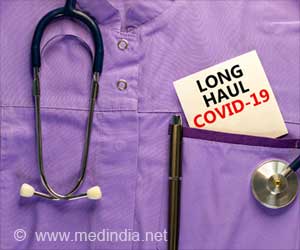A new study looked into the extent of residual lung damage following COVID-19 hospitalization.

What is Interstitial Lung Disease
“Interstitial lung disease” refers to a broad group of diseases that are characterized by lung scarring, including idiopathic lung fibrosis. This scarring makes it difficult to breathe and get oxygen into the bloodstream. Lung damage from this group of diseases may be irreversible and get worse over time.‘After their recovery, fibrotic patterning was found in 11% of patients who were hospitalized due to COVID-19.’





“While many people suffer from prolonged shortness of breath, the major implication of these findings is that a significant number of people discharged from a COVID hospitalization may also have fibrotic abnormalities in their lungs. These results should help concentrate efforts to closely follow at-risk patients. This follow-up should include repeat radiological imaging and lung function testing,” said corresponding author Iain Stewart, PhD, advanced research fellow (Rayne Foundation), Margaret Turner Warwick Centre for Fibrosing Lung Disease, National Heart and Lung Institute, Imperial College London. He added, “For some people, these fibrotic patterns may be stable or resolve, while for others, they may lead to longer term lung fibrosis progression, worse quality of life, and decreased life expectancy. Earlier detection of progression is essential to improving outcomes.”
The UK Interstitial Lung Disease (UKILD) study was performed in cooperation with the PHOSP (post hospitalization)-COVID study, which consists of researchers and clinicians from across the United Kingdom, to look at how different patients who were hospitalized with COVID-19 subsequently recovered. The UKILD COVID study excluded patients in PHOSP-COVID who had interstitial lung disease prior to COVID-related hospital admission.
Interim study participants were discharged from the hospital by the end of March 2021, while interim data were collected until October 2021, restricting the analysis to 240 days after discharge. The researchers identified patients with thoracic CTs from the PHOSP-COVID database. The primary outcome they sought to determine was the prevalence of residual lung abnormalities in people discharged from a COVID-19 hospitalization. Analyses were performed to determine participants’ risk factors for residual lung abnormalities in those who did not receive a CT scan. These risks were used to estimate their prevalence in the overall population hospitalized by the end of March 2021.
Advertisement
“The next phase of the study is a primary analysis, which will be performed at 12 months. At that time, we will also use linked electronic health records of hospital admissions and mortality data to support our analyses. We expect to have the final results in early 2023.”
Advertisement















